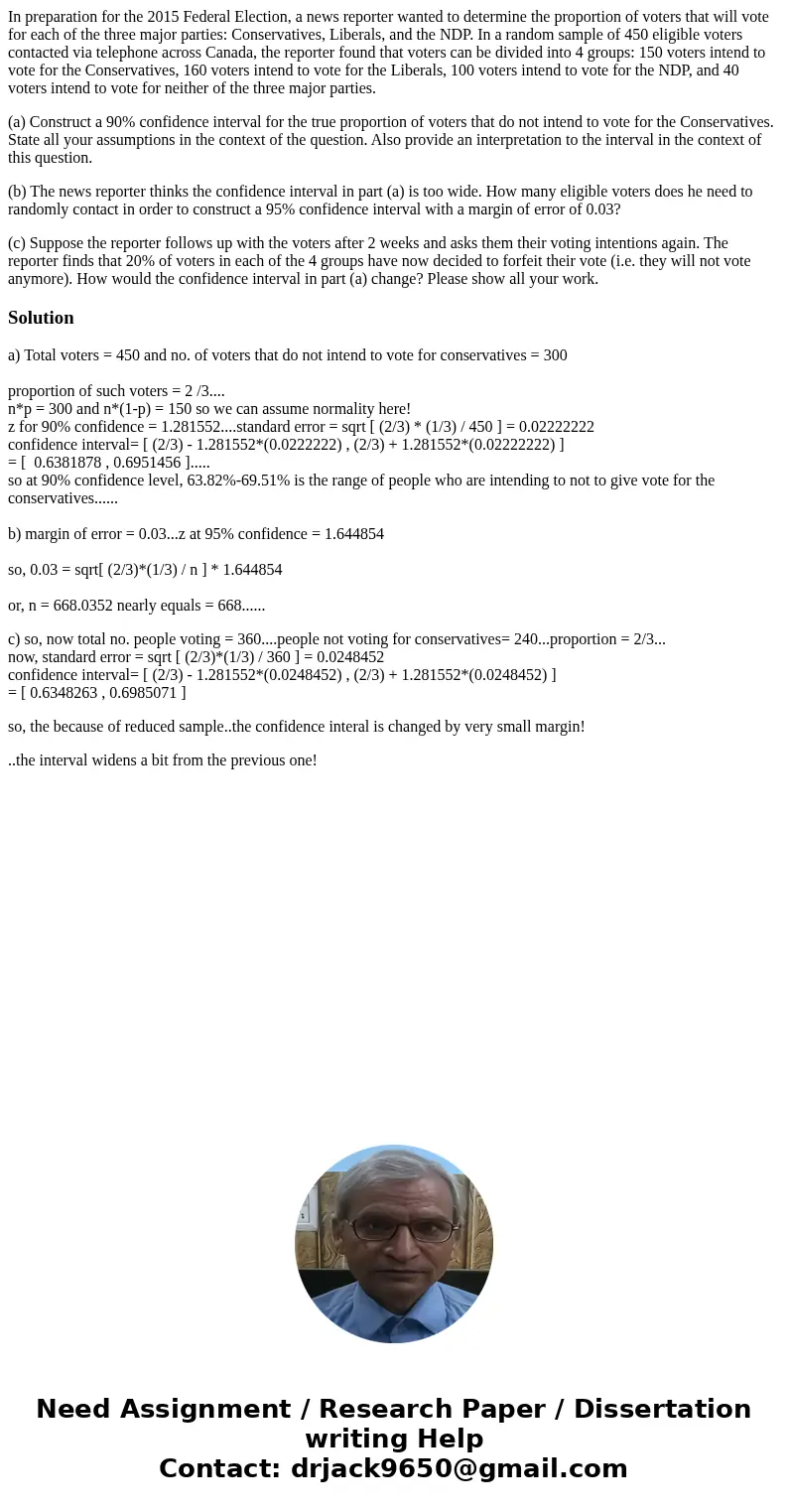In preparation for the 2015 Federal Election a news reporter
In preparation for the 2015 Federal Election, a news reporter wanted to determine the proportion of voters that will vote for each of the three major parties: Conservatives, Liberals, and the NDP. In a random sample of 450 eligible voters contacted via telephone across Canada, the reporter found that voters can be divided into 4 groups: 150 voters intend to vote for the Conservatives, 160 voters intend to vote for the Liberals, 100 voters intend to vote for the NDP, and 40 voters intend to vote for neither of the three major parties.
(a) Construct a 90% confidence interval for the true proportion of voters that do not intend to vote for the Conservatives. State all your assumptions in the context of the question. Also provide an interpretation to the interval in the context of this question.
(b) The news reporter thinks the confidence interval in part (a) is too wide. How many eligible voters does he need to randomly contact in order to construct a 95% confidence interval with a margin of error of 0.03?
(c) Suppose the reporter follows up with the voters after 2 weeks and asks them their voting intentions again. The reporter finds that 20% of voters in each of the 4 groups have now decided to forfeit their vote (i.e. they will not vote anymore). How would the confidence interval in part (a) change? Please show all your work.
Solution
a) Total voters = 450 and no. of voters that do not intend to vote for conservatives = 300
proportion of such voters = 2 /3....
n*p = 300 and n*(1-p) = 150 so we can assume normality here!
z for 90% confidence = 1.281552....standard error = sqrt [ (2/3) * (1/3) / 450 ] = 0.02222222
confidence interval= [ (2/3) - 1.281552*(0.0222222) , (2/3) + 1.281552*(0.02222222) ]
= [ 0.6381878 , 0.6951456 ].....
so at 90% confidence level, 63.82%-69.51% is the range of people who are intending to not to give vote for the conservatives......
b) margin of error = 0.03...z at 95% confidence = 1.644854
so, 0.03 = sqrt[ (2/3)*(1/3) / n ] * 1.644854
or, n = 668.0352 nearly equals = 668......
c) so, now total no. people voting = 360....people not voting for conservatives= 240...proportion = 2/3...
now, standard error = sqrt [ (2/3)*(1/3) / 360 ] = 0.0248452
confidence interval= [ (2/3) - 1.281552*(0.0248452) , (2/3) + 1.281552*(0.0248452) ]
= [ 0.6348263 , 0.6985071 ]
so, the because of reduced sample..the confidence interal is changed by very small margin!
..the interval widens a bit from the previous one!

 Homework Sourse
Homework Sourse